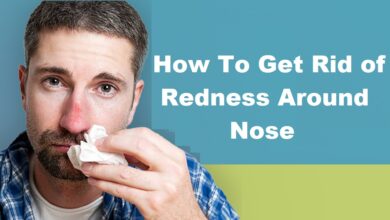How to Get Rid of Acne Scars Medically or at Home? 2024

Acne scars can be frustrating and embarrassing. Even after acne breakouts clear up, the marks left behind can be difficult to deal with. Luckily, there are many treatment options available, both medically and at home, that can help reduce and minimize the appearance of acne scars.
What Causes Acne Scars?
Before looking into how to get rid of acne scars, it’s important to understand what causes them in the first place. Acne scars form when an acne lesion, like a papule, pustule, or cyst, damages the skin surrounding the pore.
Some key causes and types of acne scars include:
- Inflammatory acne lesions– This type of acne occurs when the pore becomes inflamed. Inflammation injures the skin and destroys collagen, leading to depressed acne scars like ice pick scars and boxcar scars.
- Severe nodular acne– Nodular acne lesions are large, solid, painful lumps under the skin. They can cause tissue and collagen damage.
- Picking/Popping pimples– This forces debris deeper into the skin, causing more inflammation and collagen damage.
The extent of the inflammation and injury determines the type of scar that forms. Acne scars can be shallow or deep and appear on different parts of the face or body. Common types of acne scars include:
- Ice pick scars– Narrow, deep pits in the surface of the skin, usually on the cheeks.
- Boxcar scars– Broad depressions with sharply defined edges, similar to chickenpox scars.
- Rolling scars– Wide depressions with sloping edges, giving the skin a wave-like appearance.
- Hypertrophic scars– Thick, raised scars that develop when the body overproduces collagen.
- Keloid scars– Firm, rubbery lesions or shiny, fibrous nodules that extend beyond the original wound.
Medically Treating Acne Scars
Several medical and surgical procedures are available through dermatologists that can treat acne scars. Treatment options include:
Prescription Creams
- Retinoids– Prescription vitamin A creams like tretinoin or tazarotene help rebuild collagen, improving the appearance of rolling and boxcar scars.
- Growth factors– Growth factors like fibroblast growth factors help stimulate collagen production and remodel scar tissue.
- Steroid injections– Kenalog injections deliver corticosteroids directly into hypertrophic or keloid scars to flatten and soften scar tissue.
Professional Procedures
- Laser skin resurfacing– Ablative or fractional laser treatment removes the outer layers of skin to promote collagen production. Especially effective for ice pick and boxcar scars.
- Chemical peels– Glycolic acid or trichloroacetic acid (TCA) peels remove damaged skin so healthier tissue can grow and generate new collagen. Improves rolling and shallow box car scars.
- Dermabrasion– Controlled surgical scraping to remove surface layers of skin. New skin regrows to cover depressions caused by scars.
- Microneedling– Treatment uses small needles to puncture the skin, triggering collagen production that lifts depressed scars.
- Subcision– Severing fibrous bands beneath scars allows space for new collagen to fill out depressions. Helps roll and boxcar scars.
- Punch techniques– Small scars can be cut out and closed with stitches. Larger scars can be grafted or filled in with healthy skin using a skin punch.
- Steroid injections– Directly injected into keloid or hypertrophic scars to reduce inflammation and flatten scar tissue.
- Surgical Scraping– Scraping off the top layer of hypertrophic scars under local anesthesia to reduce bulk and irregular texture.
- Cryotherapy– Freezing keloid scars with liquid nitrogen to help flatten and lower scar.
- Silicone sheets/gel– Used to flatten and soften hypertrophic or keloid scars.
What to Expect During Medical Scar Treatments
Medical treatments are provided at a dermatologist’s office. Most procedures require little or no downtime. However, laser treatments, dermabrasion, and punch techniques have longer recovery periods. Side effects like redness, swelling, bruising, and scabbing are common but usually subside within 1-2 weeks.
Multiple treatments are typically needed for optimal results, with sessions spaced 1-2 months apart. On average, patients see at least 50% improvement in the appearance of acne scars within 3-4 months of treatment.
At-Home Remedies for Acne Scars
For mild scarring, home remedies using natural ingredients can also help diminish the appearance of acne scars over time. Some DIY options include:
Aloe Vera
The soothing, anti-inflammatory properties of aloe vera gel help repair skin damage and fade scarring. Apply pure aloe vera to scars twice daily.
Coconut Oil
Contains fatty acids and vitamins E and K that help rehydrate and repair scar tissue. Gently rub extra virgin coconut oil into scars daily.
Honey
Has antiseptic and antimicrobial properties that help wounds heal. Apply raw honey to scars and leave on for 30 mins before rinsing. Use 2-3 times per week.
Lemon Juice
Contains citric acid and vitamin C to exfoliate skin and lighten pigmented scars. Use diluted lemon juice on scars, rinsing after 10 minutes. Use every 2-3 days.
Rosehip Seed Oil
Rich in vital vitamins and antioxidants that promote skin regeneration. Gently massage 2-3 drops into scars twice daily.
Shea Butter
Contains vitamins A and E to repair damaged collagen and help fade scarring. Gently rub into scars nightly before bed.
Tea Tree Oil
Has antibacterial, anti-inflammatory, and wound-healing properties. Dab diluted tea tree oil on scars twice a day with a cotton ball.
Baking Soda
Gently exfoliates and lightens hyperpigmented scars when made into a paste with water. Rub paste into scars, rinsing after 5 minutes. Use 1-2 times per week.
Apple Cider Vinegar
Contains acetic acid that helps balance skin tone and reduce the appearance of scars. Use a cotton ball to dab diluted ACV onto scars daily.
Lifestyle Tips for Reducing Acne Scarring
Alongside treatment, certain lifestyle measures can also help minimize acne scars:
- Avoid picking/popping pimples to prevent worsening scars or causing new ones. Never squeeze or pick active breakouts.
- Wear sunscreen daily to protect the skin from further discoloration and damage. Opt for broad spectrum SPF 30 or higher.
- Eat a healthy, balanced diet rich in collagen-boosting vitamins C, E, A, zinc and silica. Stay hydrated and limit processed foods.
- Quit smoking to promote healing. Smoking impairs circulation, delaying wound healing.
- Manage stress levels since stress hormones can worsen inflammatory acne and scarring. Make time for relaxing activities every day.
- Get 7-9 hours of sleep nightly so your skin has time to renew itself overnight. Lack of sleep increases inflammation.
With patience and consistency using targeted treatments, most types of acne scars can be significantly improved or minimized for a smoother, more even complexion. Speak to your dermatologist about recommended treatment options tailored to your scar type and severity. Don’t lose hope – solutions are available to help you achieve clear, scar-free skin!
Frequently Asked Questions About Acne Scar Removal
Here are some common questions about reducing the appearance of acne scars:
Q: How long does it take to get rid of acne scars?
A: It can take several months to see significant improvement in acne scarring with consistent treatment. Most scars require multiple procedures 2-4 weeks apart. Total treatment time averages 6 months to 1 year for optimal results.
Q: What is the best home remedy for acne scars?
A: Dermatologists recommend gentle skin care paired with evidence-based scar remedies like silicone gel sheeting, rosehip seed oil, vitamin C serums, Differin gel, and over-the-counter retinoids. Avoid harsh ingredients.
Q: Can aloe vera remove acne scars?
A: Studies show aloe vera has wound-healing properties that can help lighten acne marks and scars over time. Its anti-inflammatory effects may aid scar recovery. Use pure aloe vera gel on scars daily.
Q: Do acne scars go away completely?
A: With consistent treatment over time, acne scars can become significantly less noticeable. However, most acne scars cannot be removed completely. Treatments aim to smooth and flatten scars to make them less visible.
Q: Can I self-treat ice-pick acne scars?
A: No, self-treatment is not recommended for severe scarring like ice-pick scars. Consult a dermatologist for professional scar revision procedures like punch excision, lasers, or deep chemical peels.
Q: How do dermatologists remove acne scars?
A: Dermatologists tailor treatment plans based on the type and severity of scarring. Common options include laser skin resurfacing, microneedling, chemical peels, steroid injections, dermabrasion, and punch techniques.
Q: Will drinking more water get rid of acne scars?
A: Staying hydrated supports skin health and wound healing. However, drinking more water alone will not get rid of acne scarring. Combine good hydration habits with proven topical scar treatments for the best results.
Q: Can you completely get rid of ice-pick acne scars?
A: Ice pick scars are challenging to treat because they are narrow and extend deep into the dermis. Laser resurfacing and punch excision can help improve their appearance. But ice pick scars may not resolve completely.
Conclusion
While acne scarring can be difficult to eliminate, consistent treatment with scientifically proven modalities offers tremendous improvements for most people. Explore your options – combining certain at-home remedies with the best professional treatments for your scar type can promote skin remodeling and collagen rebuilding to significantly reduce the appearance of acne scarring. Be patient, stick to your treatment routine, and consult a dermatologist to develop the right plan for your skin.



